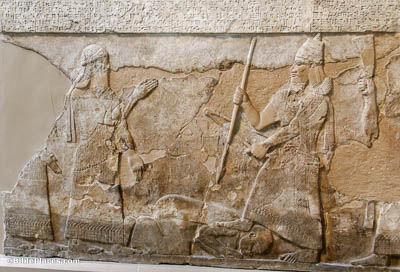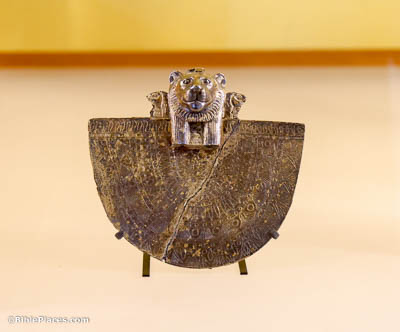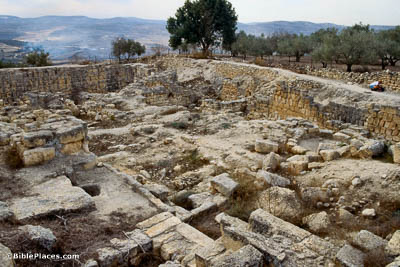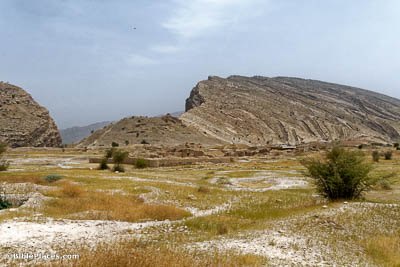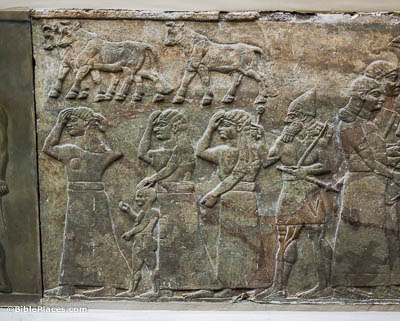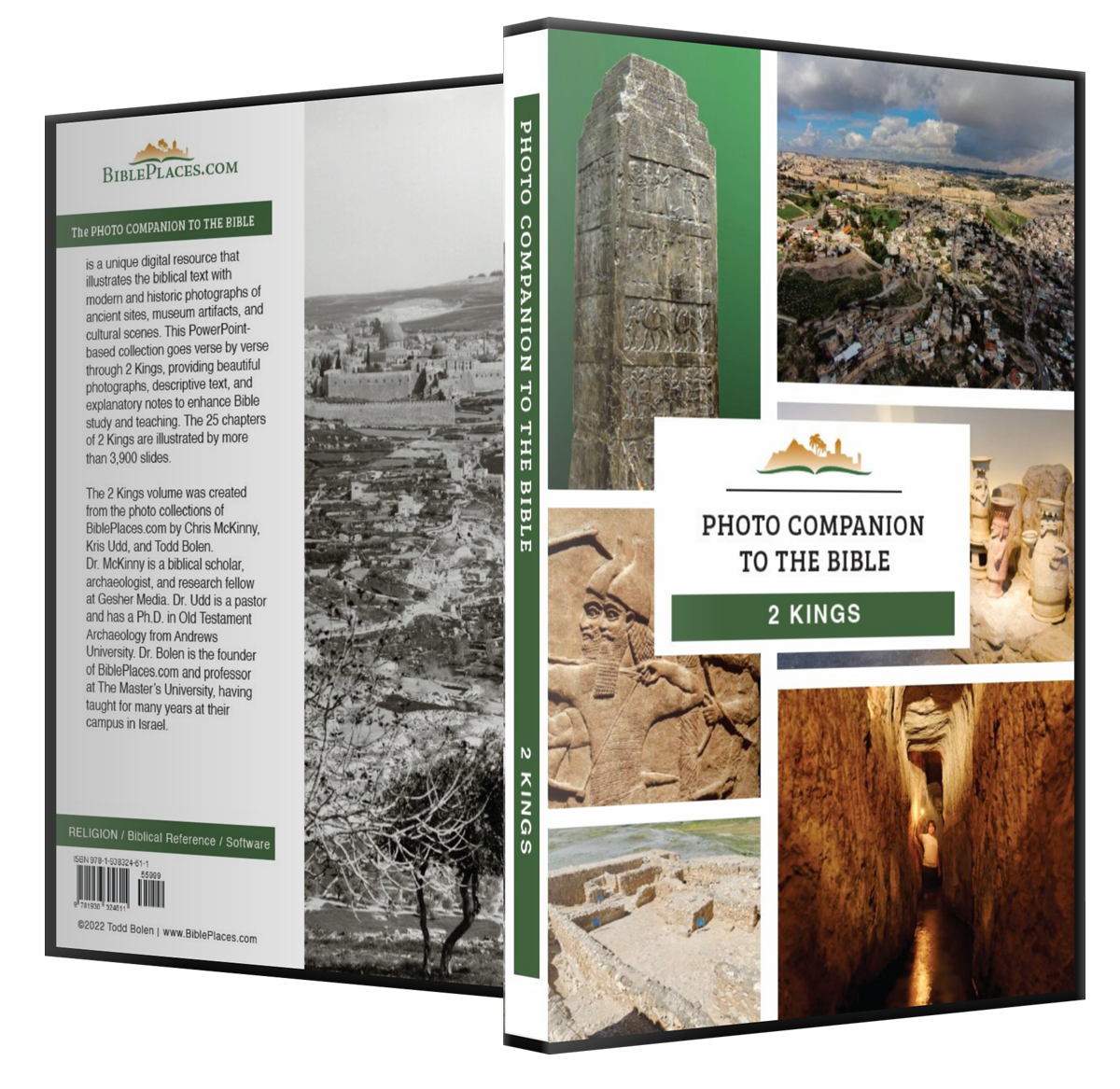Shalmaneser king of Assyria came against him, and Hoshea became his servant and paid him tribute (2 Kings 17:3).
The Assyrian king mentioned here is Shalmaneser V (r. 727–722). He was the son of Tiglath-pileser III. His rule was relatively short, his end was probably violent, and his successor Sargon II (r. 722–705) may have been unrelated to the royal family. It is not certain that any depictions of Shalmaneser V have been found. This relief depicts Tiglath-pileser with his foot on the neck of a captured enemy; it is possible that the man facing him, with upraised hand, is the crown prince Shalmaneser V.
